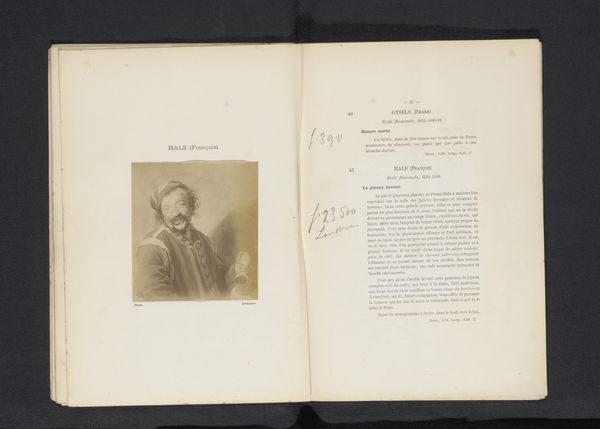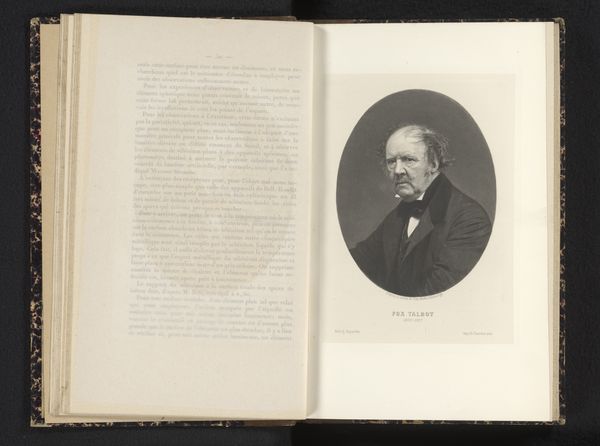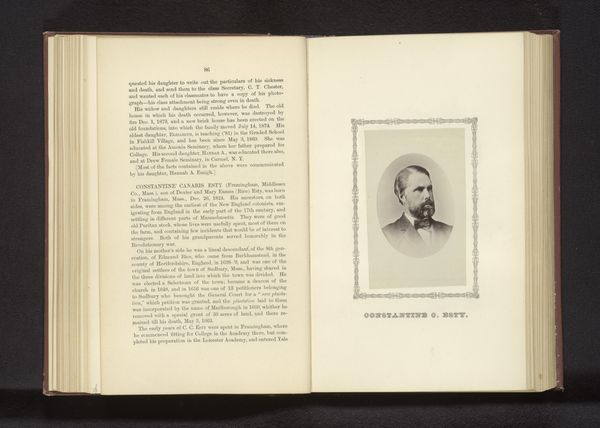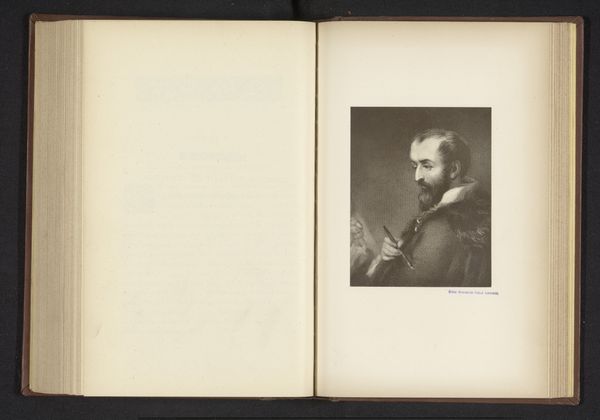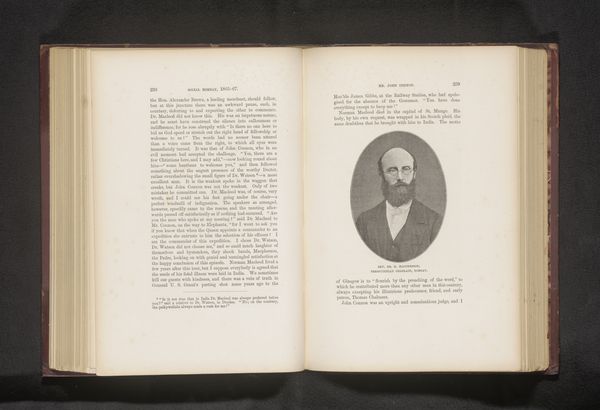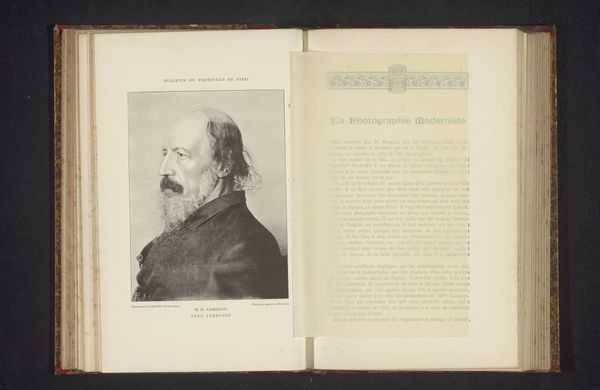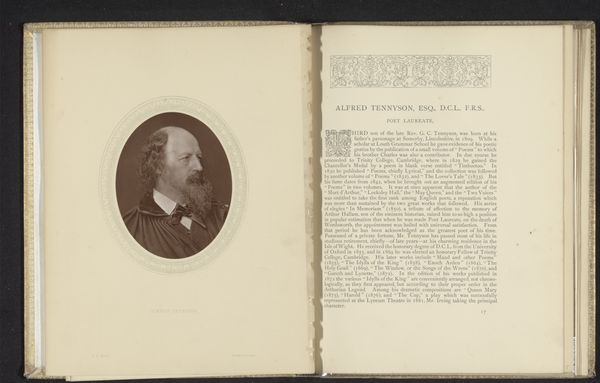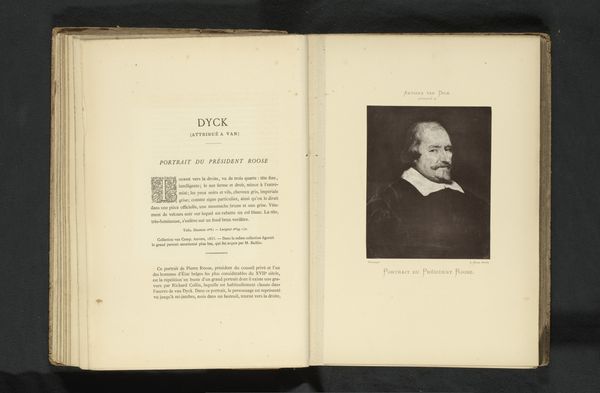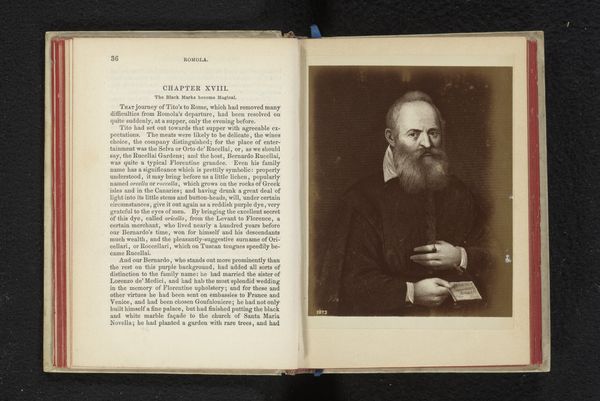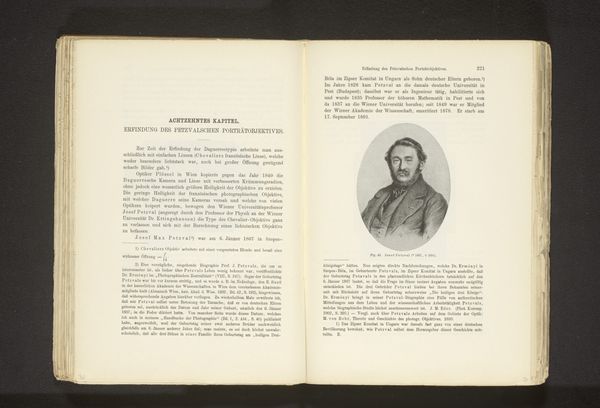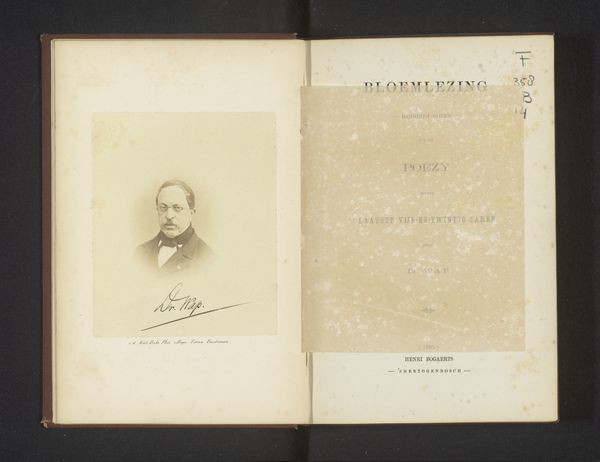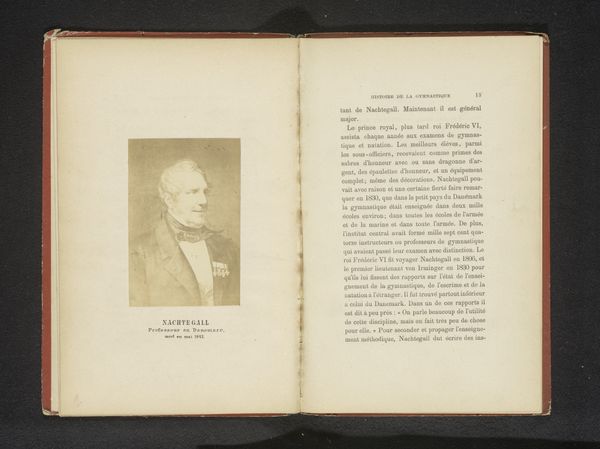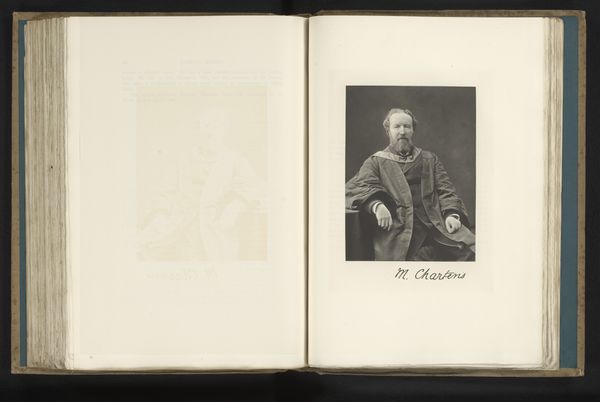
#
aged paper
#
toned paper
#
homemade paper
#
typeface
#
paper texture
#
fading type
#
thick font
#
white font
#
historical font
#
columned text
Dimensions: height 134 mm, width 107 mm
Copyright: Rijks Museum: Open Domain
Curator: Here we have an open book featuring a portrait of The Right Honorable Sir H. Bartle E. Frere. Though created before 1893, its author remains anonymous. Editor: Immediately striking is the tonal range. The aged paper provides a warm contrast to the sharp monochrome portrait on the facing page. It feels stately and quite formal. Curator: Sir Bartle Frere was a controversial figure, a colonial administrator in India and South Africa. His legacy is deeply intertwined with British imperialism and its often devastating impact on indigenous populations. We can't separate the image from its historical context of power, exploitation, and cultural erasure. Editor: Certainly. But if we focus on the visual elements, the artist captures the texture of his garments quite effectively. The stark white typeface beneath, labeling Frere's name and titles, feels rather declarative, asserting authority and importance. Curator: It does. And that typeface, those thick, deliberate letters, remind us of the power of the written word to construct and disseminate narratives. Was this image intended to legitimize Frere's rule? To present a civilized and respectable face for a project built on oppression? Editor: One could certainly see it that way. Note the way the columned text mirrors the formal portrait across from it, giving the impression of two distinct elements that complement one another within a carefully framed, visual plane. It speaks to careful composition, even as the meaning continues to stir conflict. Curator: Precisely. Even in the fading type, on what is visibly homemade, or at least aged paper, we see the endurance of colonial narratives. Looking at Frere’s posture—upright, hand tucked into his jacket—it feels staged to convey power. How does it challenge us today? How do we unpack its role in shaping our understanding of history and representation? Editor: Indeed. By engaging with this piece, we can explore the interplay of intention and reception, not just with respect to its historical era, but to this very moment. Curator: A truly important consideration, for those eager to engage more thoughtfully with the past.
Comments
No comments
Be the first to comment and join the conversation on the ultimate creative platform.
